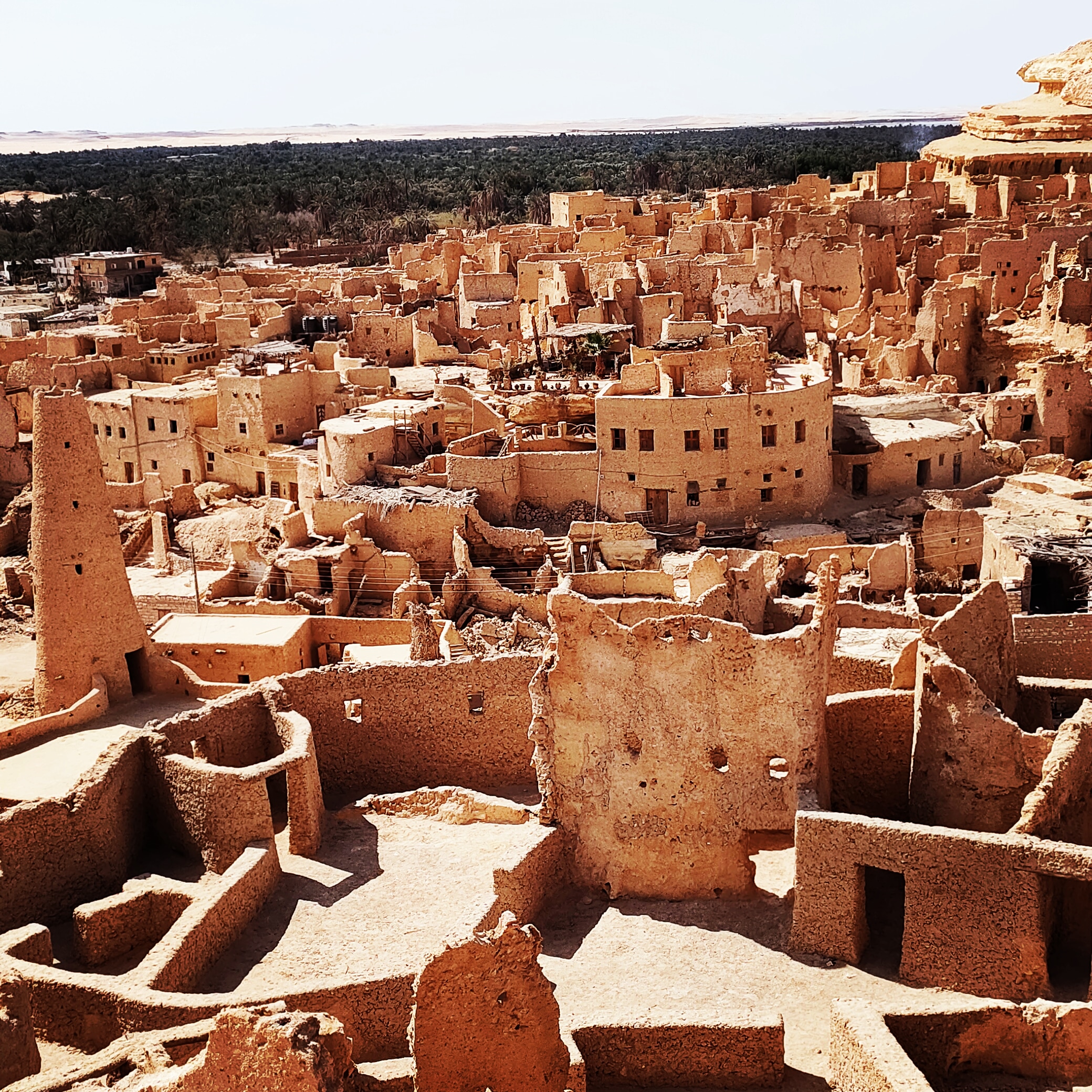
Shali Fortress
The ancient Shali Fortress is considered one of the most important archaeological sites in Siwa and Egypt in general, and UNESCO recently considered it a World Heritage Site as a unique site of its kind globally.
The name Shali in the Amazighian language means “the city”, and the Amazighian language is the language of the people of the oasis, which they speak among themselves.
Shali Fortress was built in 1203 AD when the people of Siwa Oasis decided to build a fortified Fortress that would protect them from the invasions of the desert Bedouins. It was mentioned in the ancient siwan Manuscript that in the Middle Ages, the desert Bedouins used to attack Siwa Oasis during harvest times to steal the date and olive crops and thus kill the inhabitants of the oasis until The number of men in the oasis reached only forty men out of seven tribes, so the forty men decided to build a fortified castle on a high hill. The city was opened at sunrise and closed after sunset, and the inhabitants of the oasis continued to live inside the walls of the castle until 1820 AD when Sultan Muhammad Ali decided to leave a military garrison in the oasis and then people began to descend from the Fortress little by little and build spacious houses outside where there was no luxury to build big houses inside the Fortress due to lack of space.
The materials that were used in the construction of houses in Shali were all from siwan environment and were very simple, and the walls were made of karshif, which is a rock of clay and salt extracted near salt lakes, and the mortar used in construction is clay as well. As for the roofs of the houses, palm wood was used. They are supported by olive wood, and the doors and windows of the houses were made of palm and olive wood, knowing that these materials used in the city’s architecture are very adaptable to the climate of Siwa .
All rights reserved to windows of siwa
